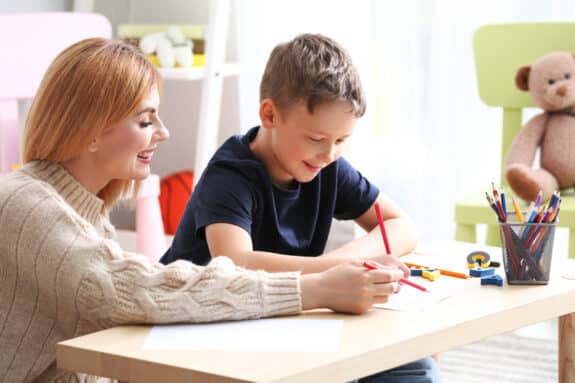Learning that your child has an autism diagnosis changes your life. It requires you to sit back and determine what you must do to help your child reach their fullest potential. All parents must do this, but for children with autism, the journey is quite different. Therapies may be needed. You may have to utilize different parenting methods. For children with non-verbal autism, it may mean combining both – parenting style and speech therapy – to encourage your child to speak.
PRT therapy, a type of speech therapy that incorporates child interest with language, has recently been studied for its efficacy, and according to researchers, it is more effective than speech therapy alone.
Conducted by Stanford University School of Medicine, the study followed 48 children with nonverbal autism over a period of of six months. All had severe delays and were between the ages of 2 and 5. Half underwent PRT therapy. The rest continued the therapies they were receiving at the time.
James Alto, age 3 at the start of the study, was one of the participants.
“I was really worried and anxious about not knowing if he would ever be able to talk,” Heidi Pim, James’ mother, said. The therapy not only gave her hope, but her son a way to communicate. “He used to not be able to point to something or ask. PRT really improved his vocabulary skills and communication back and forth. It helped us understand what he needs and wants.”
The therapies required 10 hours of week with a speech therapist. Parents also underwent training from the therapists for an hour per week so they knew how to use it at home.
For James, it started with a car.
He’d take interest and Pam would hold the car and say the word. Each time James made an attempt, he’d receive the toy. Little by little, his speech improved. It started with the word itself. Then he learned how to speak phrases, such as “green car” and “ready, set, go.”
As James’ speech improved, his frustration levels decreased.
“Before, he didn’t know how to express his feelings,” Pam said. “When I would leave for the day and come back, he didn’t know how to say ‘Mommy, I missed you,’ so instead he would hit me or cry. That has
lessened.”
Now 8, James is speaking far better than children who did not receive PRT.
”I feel so grateful now to see how many words and phrases he knows,” Pam said. “He’s able to speak clearly and socialize as well, to go up to people and ask them questions.”
And he is not alone.
Overall, children in the study developed better language skills if they received PRT therapy than the children who simply continued their conventional therapies. Social communication skills outside of speech also improved, overall. Much like James, children in the PRT group also improved developmentally, often in unexpected ways. In fact, many received benefits that are usually only seen in higher functioning children.
“It’s discouraging for parents of lower-functioning kids if we tell them that higher-functioning kids do better, because higher-functioning kids are already doing better,” Grace Gengoux, PhD, clinical associate professor of psychiatry and behavioral sciences, and lead researcher on the study, said. The new findings suggest that parents can play an especially valuable role in assisting children who have the greatest needs, she said, adding, “This provides a lot of hope.”







